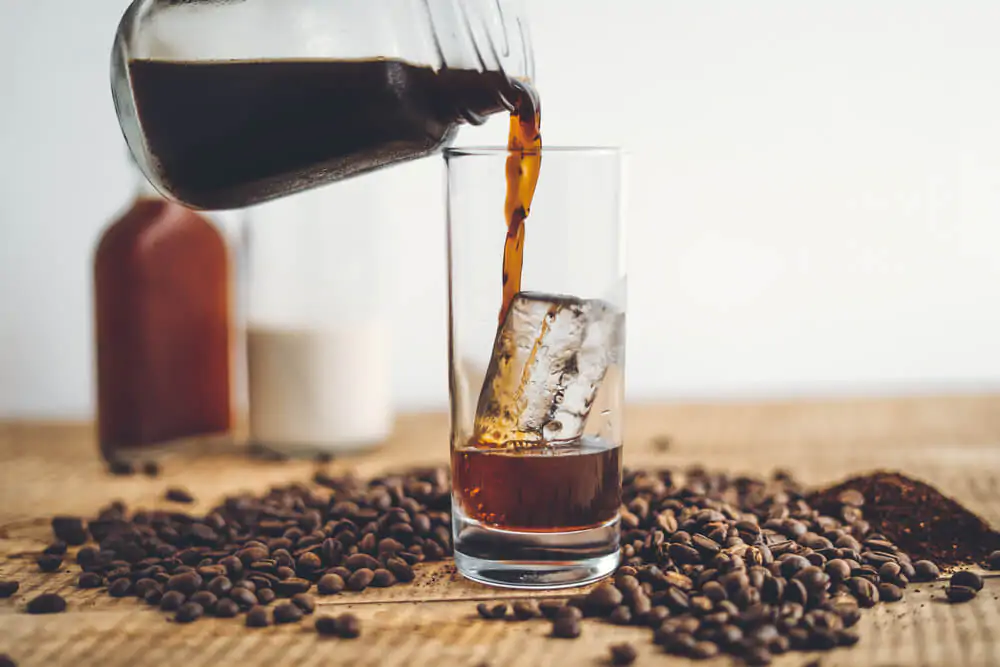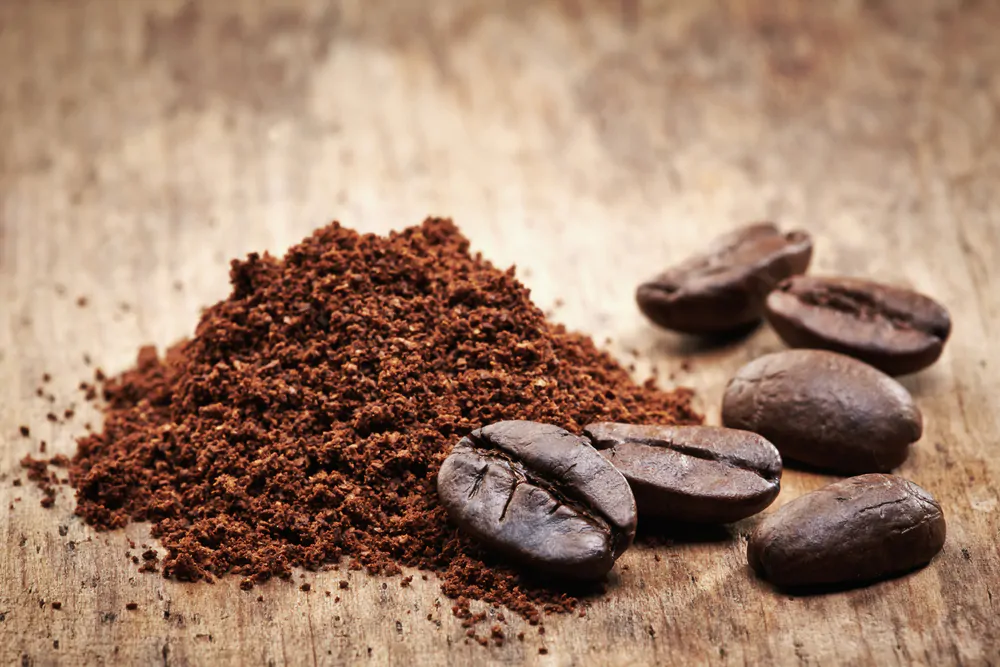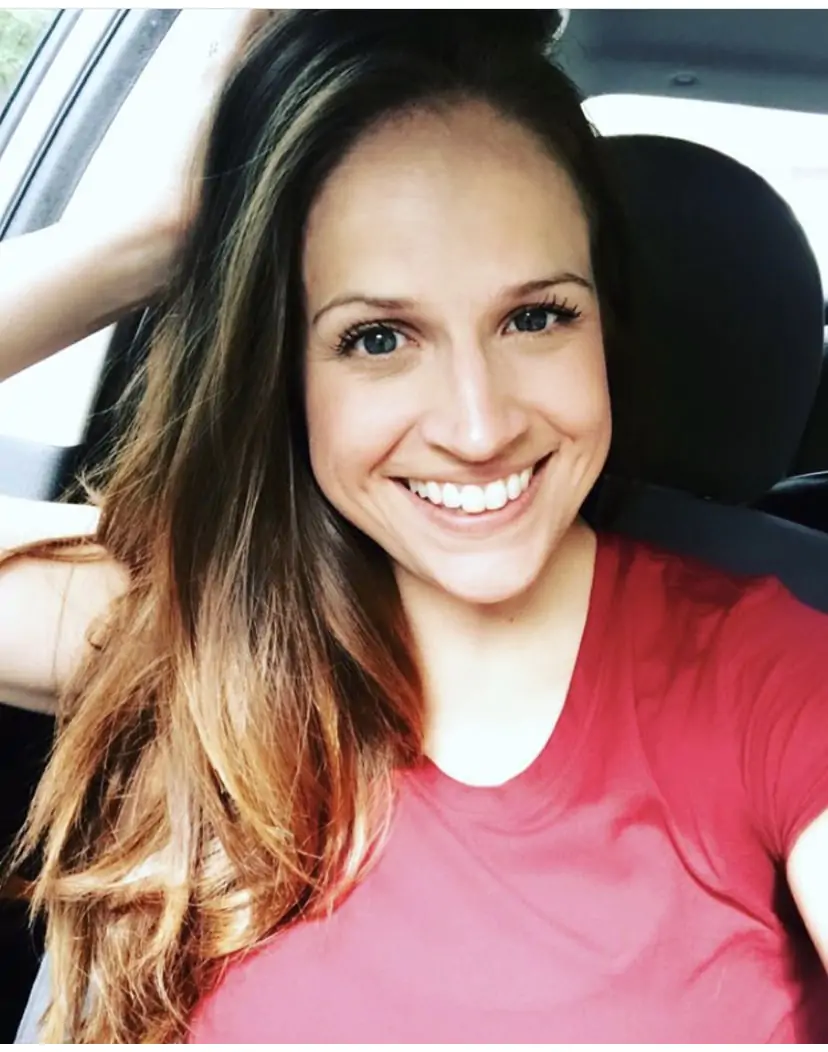Cold brew coffee is the hottest trend for cooling down, but if you want to enjoy smooth, rich coffee, it’s time to master the cold brew coffee to water ratio!

Do you want to make naturally low-acidic coffee that you can enjoy over ice during the summer and steaming hot the rest of the year? Then perfecting your cold brewing method is a must. It all starts with using the ideal coffee to water ratio of 1:4 by weight.
2 Popular Cold Brewing Methods
Believe it or not, there are actually two brewing methods that people refer to as cold brewing: the immersion approach and the slow cold drip brewing method.
1. The Immersion Method

The immersion way to brew coffee is by putting coffee in a porous container and placing it in a larger container. The holes have to be large enough to allow water to move in and out freely but too small for the coffee grounds to escape. People use various containers, including metal sieves, cloth coffee ‘socks,’ and large tea-style bags.
The equipment you need to use the immersion method to brew coffee is very inexpensive, and you can probably find everything you need in your kitchen. If you are willing to invest a little money, top-of-the-line cold brewing immersion systems cost well under 100 dollars.
This article will focus on the cold brew coffee to water ratio for the immersion method for those reasons.
2. The Slow Cold Drip Method

If brewing coffee were theater, this approach would win a Tony. It is all about the drama! If you have never seen a slow drip cold brewer before, imagine a tall wooden tower with ice and coffee-filled beakers connected with glass tubing full of water and coffee swirling around the gadget.
The slow drip method is from Japan and is also called the Kyoto-style of cold brewing. The big brewers can cost thousands of dollars, while the smaller ones for home use still cost hundreds of dollars. Since most people prefer the immersion method to slow cold drip brewing, the rest of the article will focus on the immersion method.
But, just in case you already have a slow cold drip coffee brewer, and want information on brewing, the best coffee to water ratio is 1:11.5. The ground depends on the machine and can range from a medium to coarse grind.
Why Does the Immersion Method Require So Much Coffee?
It’s true; using one part of coffee for four parts of water will use up your beans a lot quicker than other brewing methods. And if you are trying to save money on your coffee habit, it is definitely not the most economical way of brewing. But it’s not as wasteful as it may seem at first.
Immersion cold brew coffee produces a robust yet smooth concentrate that can easily stand up to ice, milk, or cream without losing its flavor. That means you can use less of the more potent cold brew concentrate and still have a satisfying cup of coffee.
When it comes to serving cold brew coffee hot, most people dilute it with an equal amount of hot water. After diluting, the actual coffee to water ratio is one to eight. Although still slightly higher than other brewing methods, the advantage of having a low-acid cup is worth the few extra cents.
Other Factors That Affect Cold Brewing Success

Although the coffee to water ratio is essential, it isn’t the only variable you need to perfect to brew a good cup of cold brew coffee. You need to consider grind size and brewing time as well.
For the immersion cold brewing method, it is best to use extra coarse ground coffee. Since the water is in contact with the coffee for a long time, the surface area doesn’t have to be as exposed as other brewing methods. In addition, the coarser grind won’t fall through the holes and wind up in your coffee.
Higher temperatures extract coffee much faster than lower ones, so cold brew coffee needs a long brew time. Many coffee experts suggest at least 14 hours in the fridge, but you can try playing around with brew length to find one you like. Most people find their ideal brew length between 12 – 16 hours.
Final Word on Cold Brew Coffee to Water Ratio
Coffee is more art than science, and when it comes to brewing the perfect cup, the only one you need to make happy is yourself. If the 1:4 ratio doesn’t work for you, adjust it to your liking. Don’t be afraid to experiment; it’s only coffee, after all.
FAQs About Cold Brew Coffee to Water Ratio
Is the ratio of coffee to water by weight or by volume?
Just like baking, going by volume is not going to cut it when you are making coffee. Getting a scale and starting to measure your coffee by weight is probably the single best way to increase your coffee-making skills dramatically.
How long does cold-brewed coffee last after making it?
It takes a long time to make cold brew coffee, but the good news is you will have plenty of time to drink it. You can store cold brew in the fridge for up to ten days. If you notice your coffee turning sour within a few days, double-check that you keep it in a clean and air-tight container.
What’s the best type of coffee to use for cold brewing?
Use any coffee you like to drink. Just remember that cold-brewed coffee has a more rounded flavor profile. Therefore, many drinkers prefer to use darker roasts for their richer, fuller taste.
